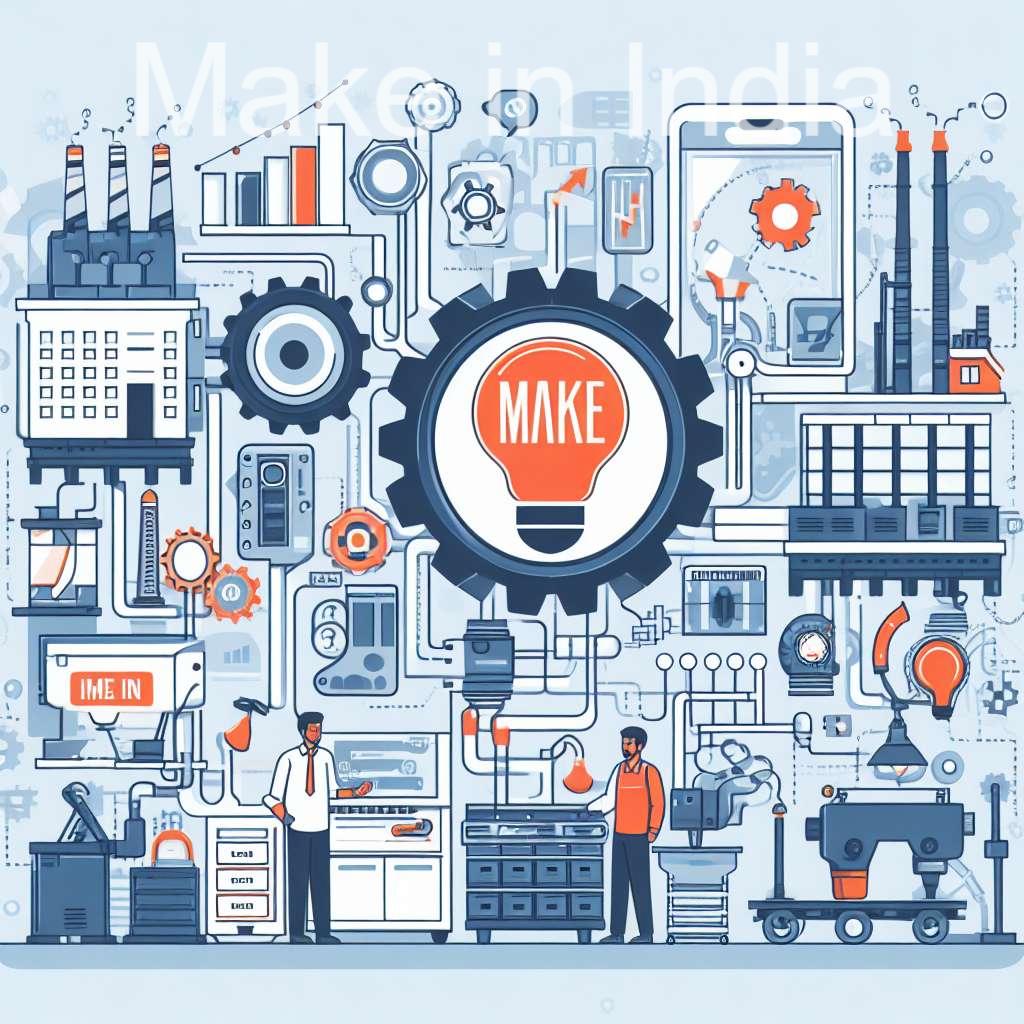Make in India, the ambitious initiative that transformed India’s manufacturing landscape, has reached a pivotal juncture. As the world enters a new era of technological disruption and sustainability, it’s time to chart the next course for growth and innovation in Make in India 2.0.

Shifting Gears:
- Embracing Industry 4.0: Automation, artificial intelligence, and robotics are no longer futuristic concepts. Make in India 2.0 must prioritize the integration of these technologies to modernize factories, boost productivity, and enhance competitiveness. Imagine smart factories where robots collaborate with humans, optimizing production lines and driving precision.
- Championing Sustainability: The world is demanding eco-friendly products and processes. Make in India 2.0 must focus on green manufacturing, renewable energy integration, and sustainable supply chains. Imagine factories powered by solar panels, generating zero waste, and minimizing environmental impact.
- Skilling for the Future: The workforce needs to adapt to the changing demands of Industry 4.0. Upskilling and reskilling programs in automation, data analytics, and AI are crucial to ensure a future-ready workforce. Imagine technicians trained in programming robots, engineers utilizing digital twins to optimize processes, and data scientists analyzing industrial data for insights.
- Nurturing Innovation: Fostering a culture of innovation is vital. Make in India 2.0 needs to encourage research and development, facilitate collaboration between academia and industry, and support startups in cutting-edge sectors like advanced materials and bioengineering. Imagine research labs buzzing with activity, universities partnering with tech giants, and young entrepreneurs developing groundbreaking solutions in diverse fields.
Addressing Roadblocks:
- Infrastructure Bottlenecks: Inadequate infrastructure, from unreliable power grids to inefficient logistics networks, hinders growth. Upgrading infrastructure must be a top priority to create a conducive environment for manufacturing. Imagine efficient ports and highways facilitating seamless movement of goods, and reliable power grids ensuring uninterrupted production.
- Regulatory Hurdles: Streamlining regulations, reducing bureaucratic red tape, and simplifying compliance procedures are essential to attract investments and ease operations. Imagine a one-stop shop for obtaining permits and clearances, and transparent regulations fostering predictability for businesses.
- Talent Gap: Bridging the skill gap in areas like robotics, cyber security, and data science is crucial. Public-private partnerships, vocational training programs, and industry-specific skill development initiatives are needed. Imagine young graduates equipped with the latest skills, enthusiastically entering the workforce and contributing to innovation.
Navigating the Next Wave:

Make in India 2.0 presents a golden opportunity to not only consolidate past achievements but also leapfrog into a future of sustainable and innovative manufacturing. By embracing technology, prioritizing sustainability, investing in skills, and addressing existing challenges, India can transform itself into a global manufacturing leader.
Imagine:
- Indian-made smart cars rolling off assembly lines powered by green energy.
- Indian scientists developing cutting-edge materials and pioneering sustainable manufacturing processes.
- A vibrant ecosystem of skilled professionals driving innovation and propelling India’s manufacturing prowess onto the world stage.
This is not just a vision; it’s a possibility within reach. Make in India 2.0 is not just an initiative; it’s a clarion call, an invitation to join hands and build a future where India not only makes in the world, but also leads the way in sustainable and innovative manufacturing.
Remember:
- This is a general overview. You can add specific examples of success stories, innovative projects, and future aspirations within Make in India 2.0.
- Highlight the collaborative nature of this initiative, emphasizing the need for participation from government, industry, academia, and individuals.
- Include visuals like infographics, maps of industrial zones, or photographs of smart factories and innovative products to illustrate the potential of Make in India 2.0.
So, let’s join hands and make Make in India 2.0 a reality. Let’s harness the power of technology, innovation, and sustainability to not just build a manufacturing powerhouse, but also create a future where India stands tall as a beacon of progress and prosperity for the world.